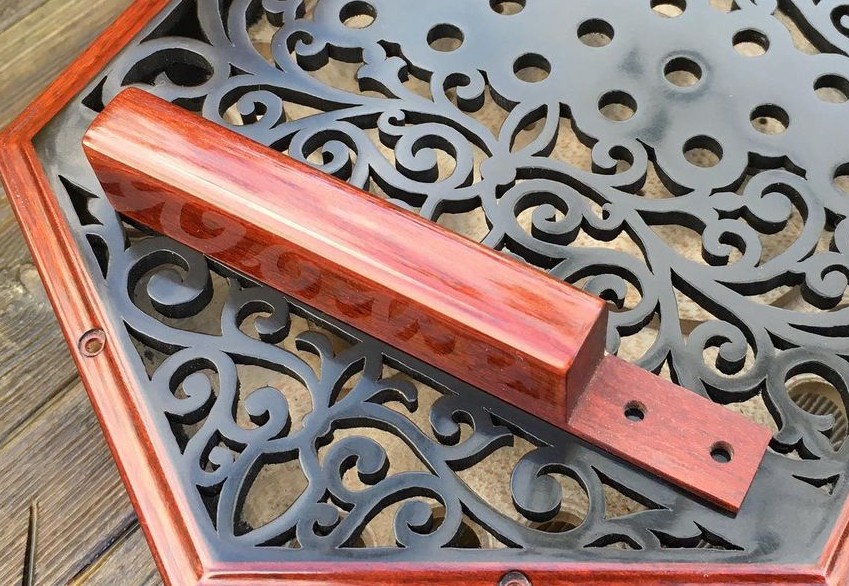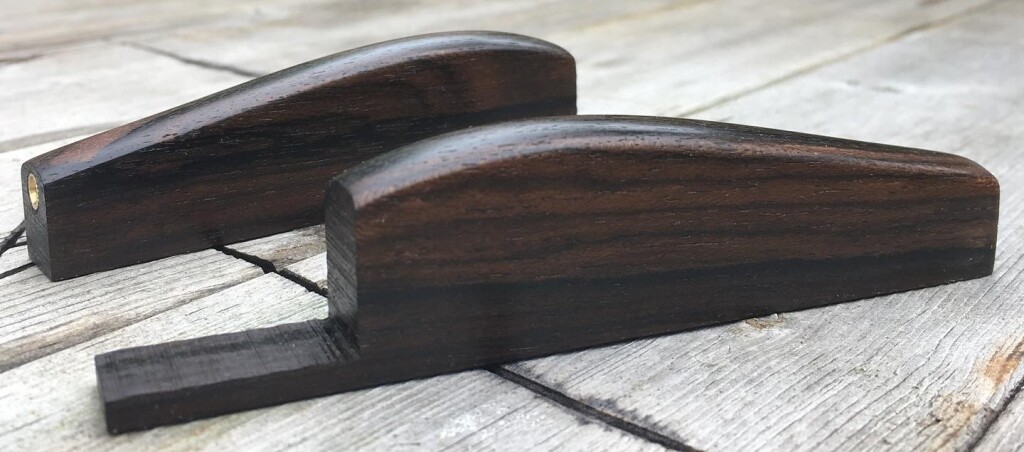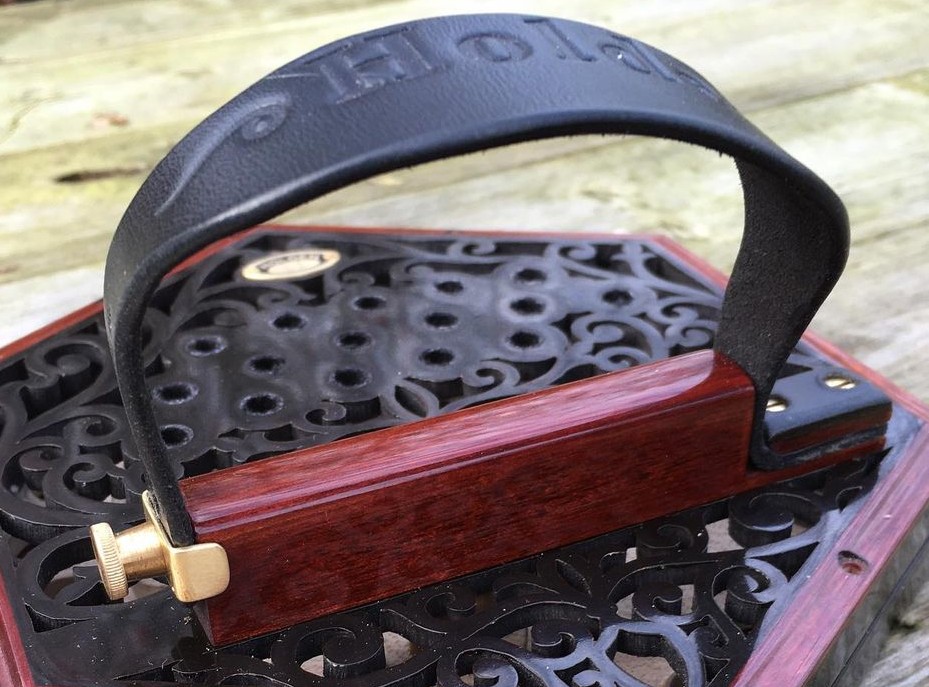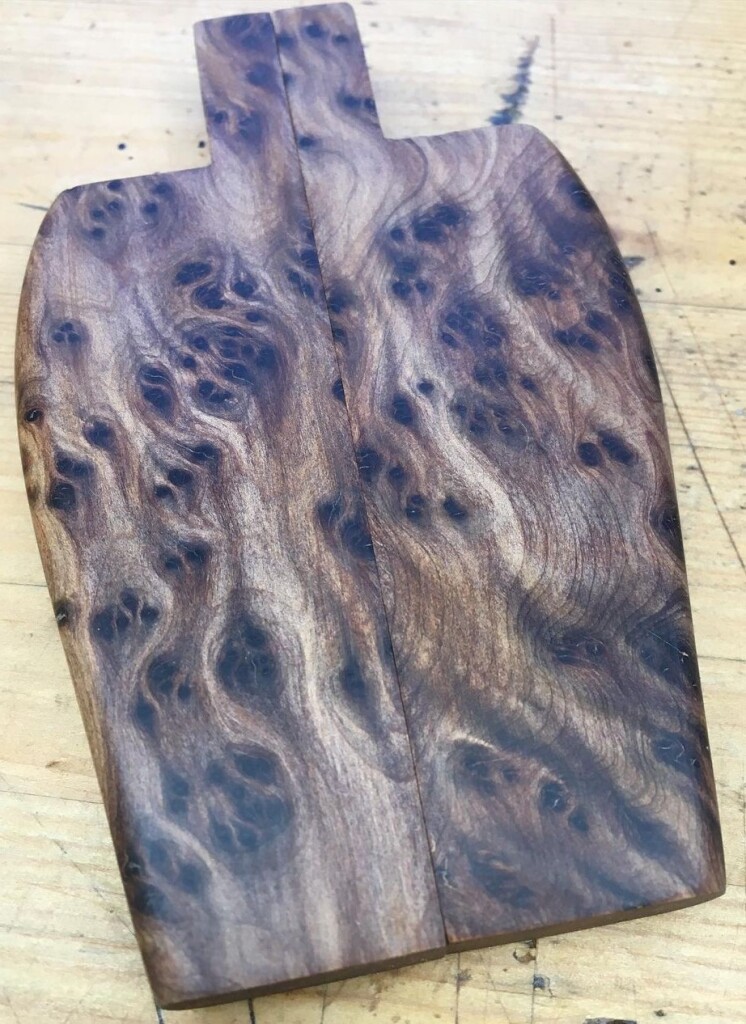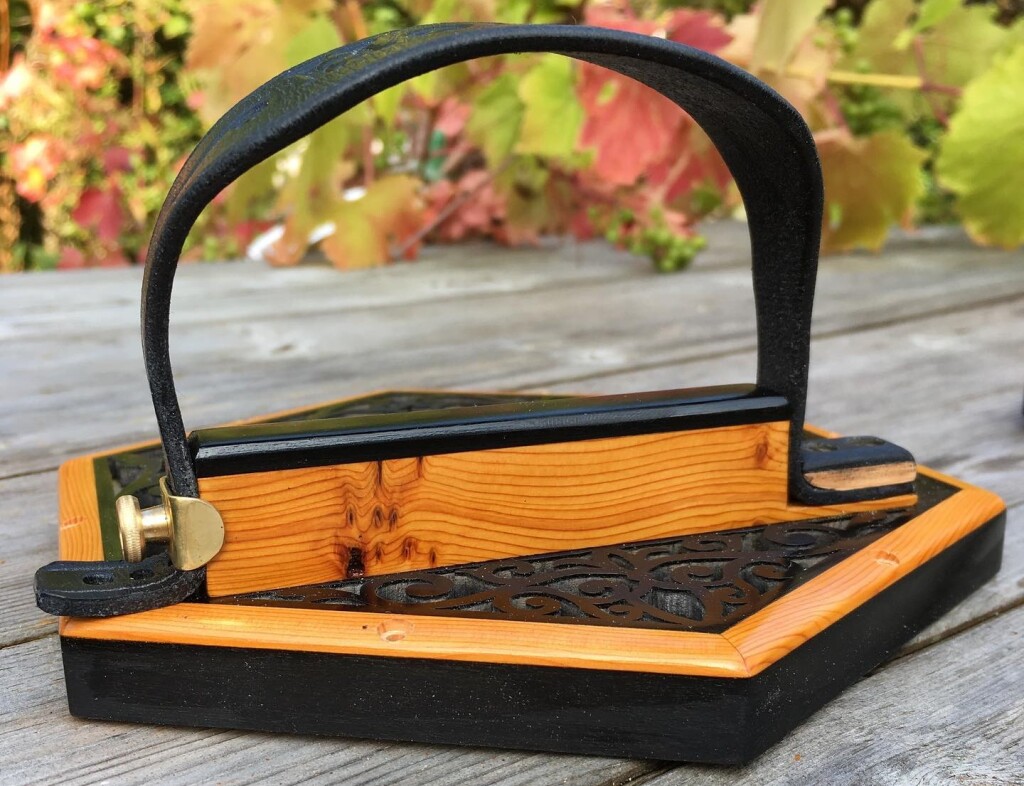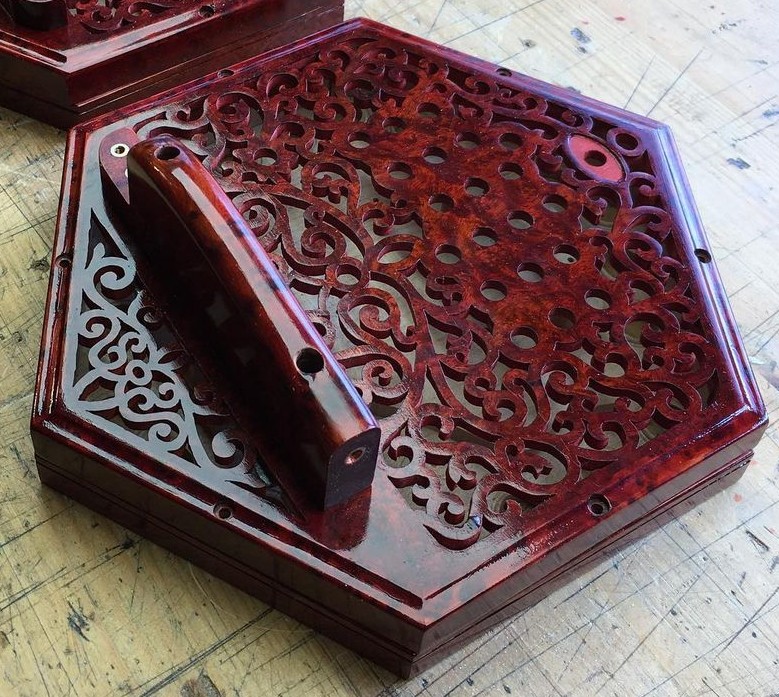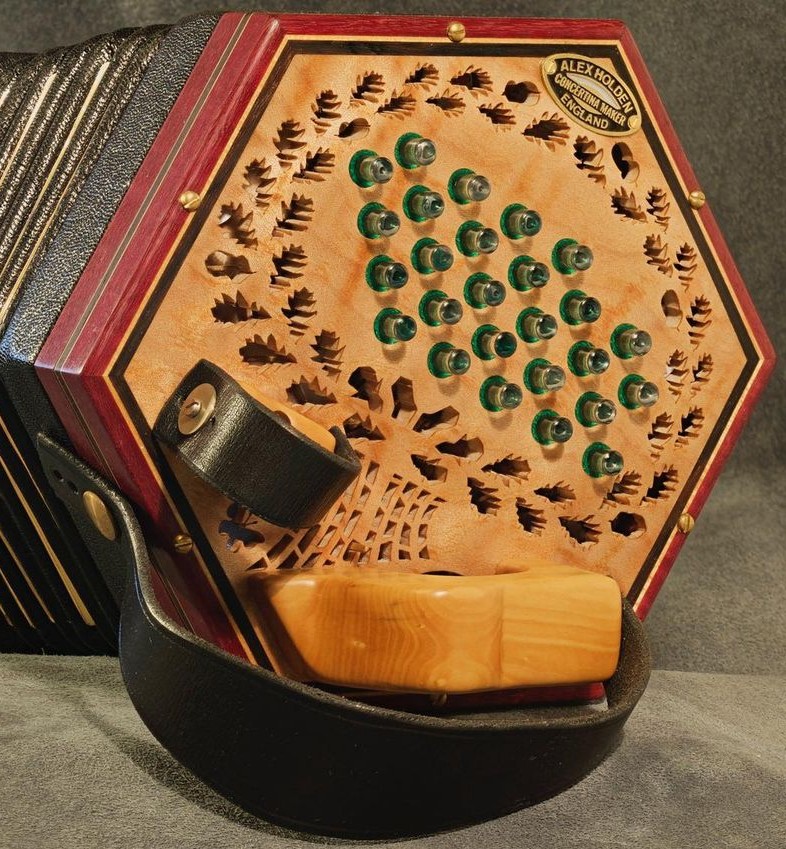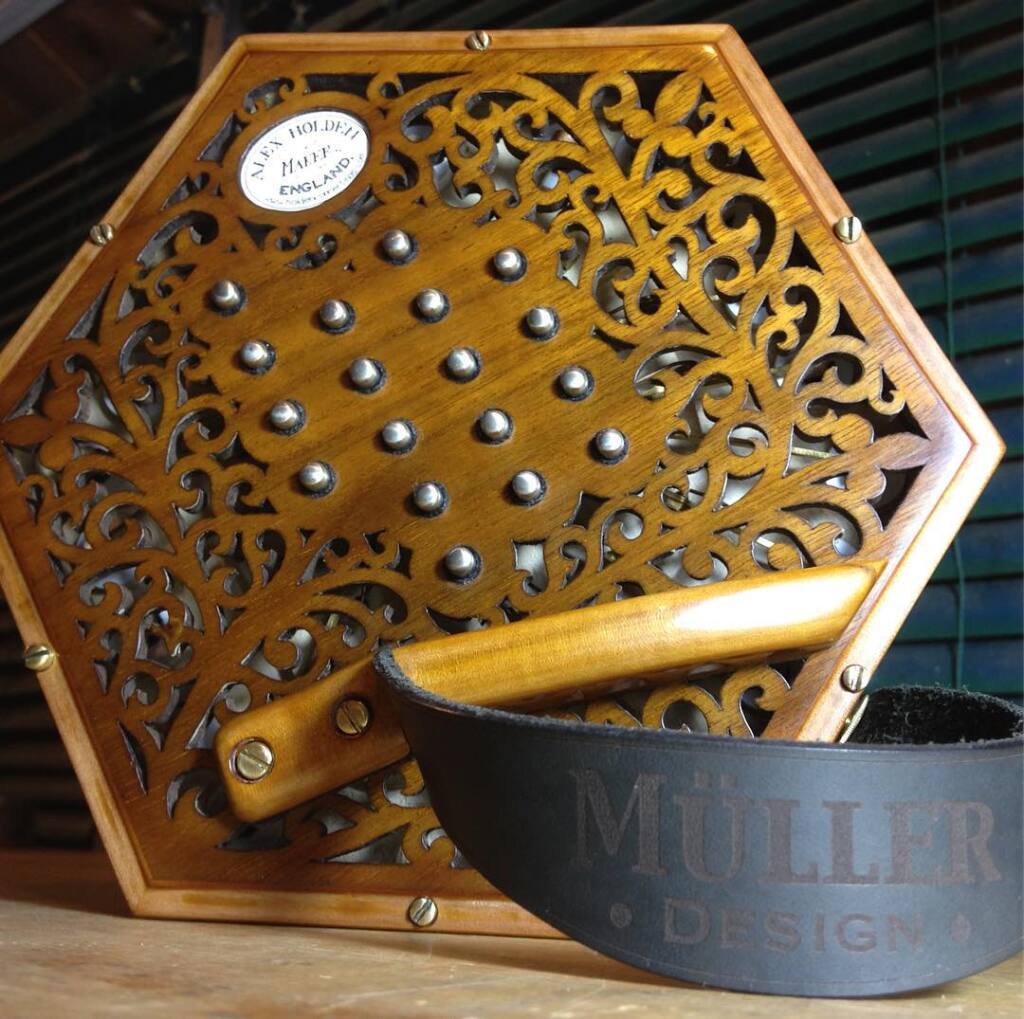I make two main shapes of handrail for Anglo and duet instruments. The most common is the traditional flat top:
Or there is the more ergonomic curved top:
I usually prefer to attach both ends of the straps to the handrail rather than threading it under a D loop and securing it with a thumb screw on the side of the action box. I turn my own knurled thumb screws:
It is usual to customise the height and other dimensions to suit the player’s preference. The hand rails on No. 12 are unusually tall, for example:
It is possible to use more than one wood in the handrail for cosmetic reasons, e.g. No. 5 has yew and Ebano hand rails:
A few of my instruments have adjustable handrails that can be moved slightly nearer to or further away from the keyboard, to suit the player’s hands and playing style, e.g. on No. 12 there are two screws accessible from holes in the tops of the handrails that, when slackened, allow the handrails to move in slots:
Some of my instruments have more unusual custom designs, e.g. the unique hand rests and thumb straps on No. 7 were designed by the client:
Or there are the low diagonal hand rests and thumb pads I put on Müller-style English instruments:
